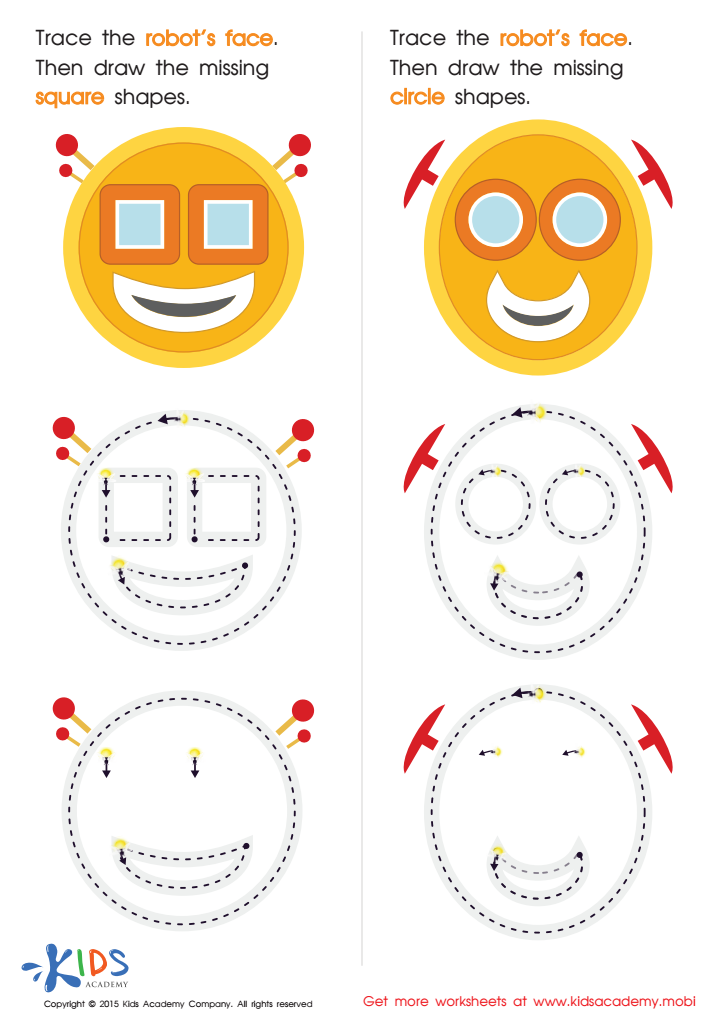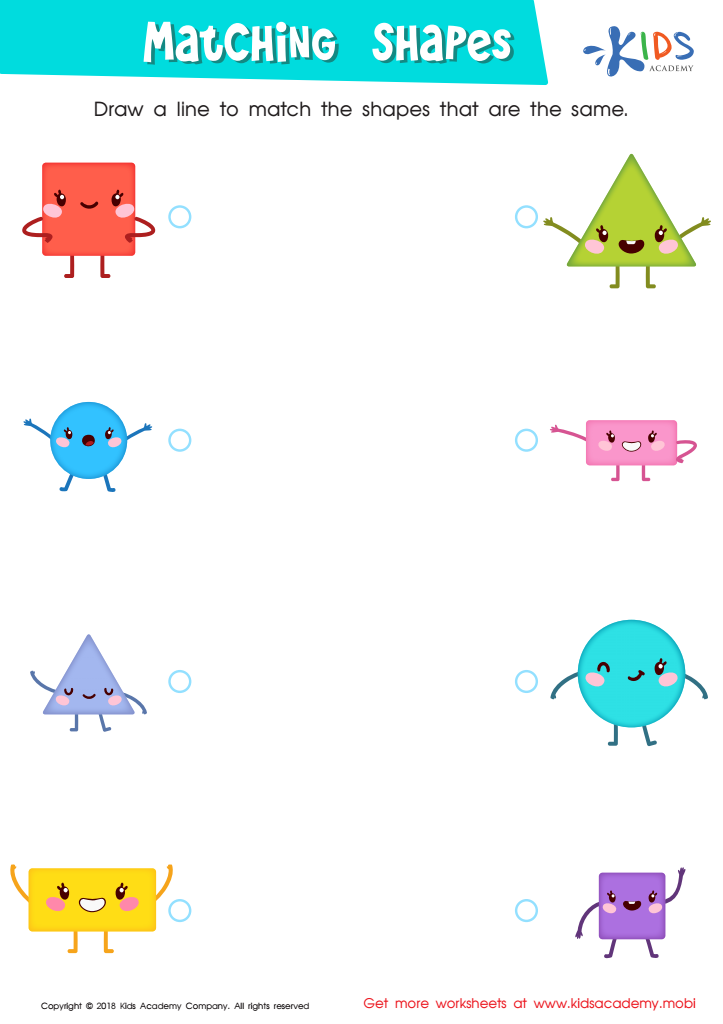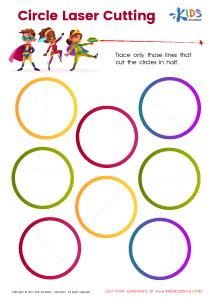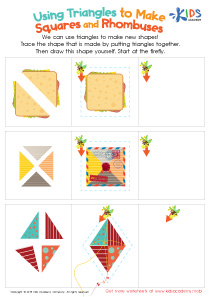Cognitive Development Normal 2D Shapes Worksheets for Ages 3-4
5 filtered results
-
From - To
Discover our engaging Cognitive Development Normal 2D Shapes Worksheets specially designed for children ages 3-4. These interactive worksheets help young learners explore and identify basic 2D shapes, fostering essential cognitive skills like recognition, matching, and sorting. With vibrant illustrations and age-appropriate activities, children will enjoy learning about circles, squares, triangles, and more in a fun, supportive environment. Our worksheets promote critical thinking and enhance hand-eye coordination as kids trace, color, and complete shape-related tasks. Perfect for early childhood classrooms or at-home learning, these resources will nurture your child’s understanding of shapes while making learning enjoyable. Download today and boost their cognitive growth!


Practicing to Draw Circles And Squares Printable


Geometry: part 1 Worksheet


Preschool Geometry Match Up Worksheet


Learning to Draw Crescents And Triangles Worksheet


Matching Shapes Worksheet
Caring about cognitive development related to normal 2D shapes in children ages 3-4 is crucial for several reasons. At this early stage, children are rapidly developing their understanding of the world around them. Recognizing and identifying basic 2D shapes such as circles, squares, triangles, and rectangles enhances their visual-spatial skills. These skills are vital for future learning in mathematics, science, and art.
Moreover, shape recognition fosters important cognitive abilities, such as problem-solving and critical thinking. For instance, when children classify and compare shapes, they begin to understand concepts like size, orientation, and symmetry. Engaging in activities that involve 2D shapes can also promote fine motor skills through building, drawing, and cutting processes.
Integrating shape-related activities into playtime helps cultivate not only cognitive growth but also language development. Children learn to articulate their thoughts and express similarities and differences, enriching their vocabulary. Furthermore, encouraging a strong foundation in these concepts supports school readiness, setting children up for future academic success. Therefore, it is essential for parents and teachers to focus on cognitive development through 2D shapes to nurture holistic learning and provide children with the skills they need for lifelong learning.
 Assign to My Students
Assign to My Students















